A Letter from the Spanish Flu
She was rummaging through an old box of donation forms when she found it. In September 2021, Museum Archivist Kaili Smith glanced over a letter tucked away amongst an array of forms from the 1980s era. She had been searching for specific paperwork on an old donation, and had inadvertently stumbled across a letter that offered a peek into a rather interesting period of history in Blaine County.
It was written in Hailey, Idaho, during the height of the Spanish Flu epidemic in February 1920.
When this type-written letter came into the possession of the Museum, it was typical donation of “old letters” that the Museum dutifully accessions in its archives, joining thousands of documents ready to be pertinent to any type of future research need. Over one hundred years later, in 2021, this letter became pertinent again in the midst of a new global-level pandemic.
With a mission to help all with historic research, the Museum found the Covid-19 pandemic presented another opportunity to bring forward historical information in its archives to help study the last widespread pandemic and how the world and our community responded.
The Spanish Flu started in 1918 following an outbreak in military barracks at the end of World War 1. The illness quickly spread worldwide, ultimately resulting in approximately 50 million deaths. The pandemic lasted through 1920, although the exact ending point is somewhat ambiguous.
During the Spanish Flu epidemic, the world had to grapple with effective ways to prevent the spread of a dangerous illness, much like in 2020. Unfortunately, local information on the pandemic from the Wood River Valley during 1920 was not widely available. That time period happened to coincide with a gap in the local newspaper coverage, as there had been an economic downturn in the Wood River Valley between 1910s-1930s. Silver prices had plummeted, squelching the booming mining era, and the successful tourism of Sun Valley would not begin until 1936.
On top of local casualties from World War 1 (1914-1918), a flu pandemic must have added greatly to the hardship of the residents in Blaine County.
In the absence of traditional sources of archival information, this type of personal account helps us better to know how our communities handled the Spanish Flu. Which is why, as Archivist Smith excitedly discovered, the Museum was able to verify the facts of the time and place from the writer of this important and detailed account. His name was John M. Price, forty-one-years-old in 1920. He had immigrated from Wales and was a mining engineer and foreman at the North Star/Independence Mine, located in present-day Triumph, Idaho. He was in Blaine County alone and away from his wife Jean, who remained just outside of Denver, Colorado, at the time. In the letter, he writes telling her not to come visit him in Blaine County.
Here is the excerpt from the letter:
The flu situation is bad, over this entire
section and much worse in Blaine county than last year. There are
a number of deaths in Hailey with a number of serious cases.
I do not consider it wise to return at this time. As you know
we cannot secure the services of competent physicians and those
that get the pneumonia are nearly sure to go, while where you are
they could receive the best of attention. John will be at Nampa
where there is a good hospital and should he get sick will be
taken there at once and if I should catch it I will also go there
as I would be afraid to stay here. The Auditor that was here
had it before he left and it was with relief that he departed
as he would have some chance if he succeeded in reaching the Lake
which was his destination.
I have escaped wonderfully well, but did really
wish that I would take on the trip as I could have gone to a
hospital and had it over with, but I do fear it here, since it is
really bad. Dutton told me today he had 65 cases in Hailey, of
which a number were in serious condition. Under these circumstance
I do not consider it advisable to return before the first of the
month or until the epidemic has run its course.
I am feeling very fine at present and am
using every precaution but of course might take it at any time.
With much love and do so hope that you are
better, although I do not understand the situation, and that you
will not get the flu.
Many kisses your loving John
The doctor “Dutton” he references was a then-thirty-year-old general practitioner living and practicing on River Street in Hailey. He was fresh off the battlefields of World War 1, where he served as an army medic. In Dr. Dutton’s own life, his father-in-law and several other family members died of the Spanish Flu.
The other “John” mentioned is their son, living at the time near Nampa, Idaho.
The good news? John and Jean Price, as well as their son John, did survive the Spanish Flu, living well into their 80s.
Archives like this can help bring connections with citizen of Blaine County over 100 years ago, going through very similar challenges from a disease that took the world by surprise and shaped everyone’s daily life and choices.
Join us at the Museum to uncover treasures that may help you make your own connections with past.
